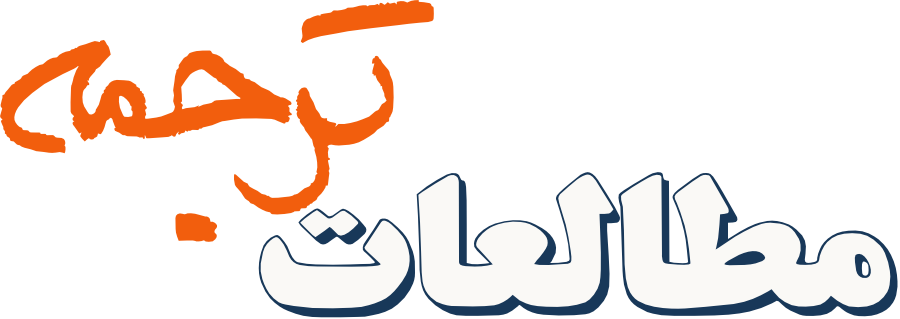اجزاء توانش ترجمه: روش تجزیهوتحلیل شغل
چکیده
برنامههای آموزش مترجم—چه در دانشگاهها و چه در مؤسسات آموزش عالی—در ایران بهسرعت افزایش پیدا کردهاند. هدف این برنامهها آمادهسازی کارآموزان ترجمه برای بازار رقابتی است. این مقاله سعی دارد زیرتوانشهای توانش ترجمه را شناسایی کند. برای این منظور، یک تجزیهوتحلیل وظیفه انجام میشود. ابتدا از یک گروه متمرکز 12 نفره خواسته میشود که کلیه نیازهای مترجم برای عملکرد مناسب را بیان کنند—این مرحله شامل تکمیل یک نظرسنجی 3 سؤالی همراه مصاحبه آنلاین است که همگی ضبط شدهاند. سپس، براساس دادههای حاصل از نظرسنجی، یک پرسشنامه 50 سؤالی تهیه و بین مترجمان حرفهای توزیع میشود تا موارد را از نظر اهمیت آنها درجهبندی کنند. سرانجام، نتایج مورد بحث و مقایسه قرار میگیرد و با مدل توانش ترجمهPACTE مقایسه میشود. نتایج تحقیق نشان میدهد که چهار زیرتوانش دانش، مهارتها، تواناییها و ویژگیها برای موفقیت مترجم ضروری هستند. همچنین، بین نتایج این مطالعه و مدل توانش ترجمه PACTE رابطۀ معناداری وجود دارد.
کلمات راهنما:
توانش ترجمه, تربیت مترجم, تجزیه و تحلیل شغلمراجع
Ashrafi, N. (2012). Construction and validation of the translation teacher competency test and the scale of students’ perceptions of translation teachers (unpublished master’s thesis). Ferdowsi University of Mashhad, Mashhad.
Albir, A. H., & Alves, F. (2009). Translation as a cognitive activity. In J. Munday (Ed.), Routledge companion to translation studies (pp. 54 –73). London, England: Routledge.
Angelelli, C. V., & Jacobson, H. E. (2009). Testing and assessment in translation and interpreting studies: A call for dialogue between research and practice. Amsterdam, Netherlands: John Benjamins.
Beeby, A. (2000). Choosing an empirical- experimental model for investigating TC: the PACTE Model. In M. Olohan (Ed.), Intercultural Faultlines: Research Models in Translation Studies I: Textual and Cognitive Aspects (pp. 43–55). Manchester, London: St. Jerome.
Bell, R. T. (1991). Translation and translating: Theory and practice. London, England: Longman.
Campbell, S. J. (1991). Towards a model of TC. Meta: Journal des traducteurs/ Meta: Translators' Journal, 36(2–3), 329–343. doi: 10.7202/002190ar
Chomsky, N. (1965). Aspects of the theory of syntax. Cambridge, M.I.T. Press.
EMT expert group. (2009). Competences for professional translators, experts in multilingual and multimedia communication. http://ec.europa.eu/dgs/translation/programmes/emt/key_documents/emt_competences_translators_en.pdf
Fox, O. (2000). The use of translation diaries in a process-oriented translation teaching methodology. In C. Schäffner & B. Adab (Eds.), Developing TC (Vol. 38, pp. 115–130). Amsterdam, Netherlands John Benjamins.
Heidari, E. and Mowlaie, B. (2016). “Iranian Instructors’ Practices and Criteria for Teaching English Translation”. Theory and Practice in Language Studies, 6(3), 622–630.
Koby, G. S. and Melby A, K. (2013). “Certification and Job Task Analysis (JTA): Establishing Validity of Translator Certification Examinations”. The International Journal for Translation & Interpreting Research, Vol. 5, No 1, pp. 174–210.
Orozco Jutorán, M., & Hurtado Albir, A. (2002). Measuring TC acquisition. Meta, 47(3), 375–402. doi: 10.7202/008022ar
PACTE. (2002). Exploratory tests in a study of translation competence, Conference Interpretation and Translation. 4(2). 41–69.
PACTE. (2003). Building a Translation Competence Model, In: Alves, F. (ed.) Triangulating Translation: Perspectives in process-oriented research. Amsterdam: John Benjamins. 43–66.
PACTE. (2008). First Results of a Translation Competence Experiment: ‘Knowledge of Translation’ and ‘Efficacy of the Translation Process’. In: Kearns, J. (ed.) Translator and Interpreter Training. Issues, Methods and Debates. London: Continuum. 104–126.
PACTE (2011). Results of the Validation of the PACTE Translation Competence Model: Translation Problems and Translation Competence. In C. Alvstad, A. Hild & E. Tiselius (Eds.), Methods and Strategies of Process Research: Integrative Approaches in Translation Studies, 317–343. Amsterdam: John Benjamins.
Schäffner, C., & Adab, B. (2000). Developing TC: introduction, In Ch. Schäffner & B, Adab (Ed.) Developing TC (pp. vii-xvi). Amsterdam, Netherlands: John Benjamins.
Šeböková, S. (2010). Comparing TC. (Unpublished masters' thesis). Brno, Masaryk University, Czech.
Wang, N. (2005). Use of knowledge, skill, and ability statements in developing licensure and certification examinations. Educational Measurement: Issues and Practice (Spring 2005), 16–22.
Winkler, G. (1992). Teaching technical translation: An engineered approach at Flensburg polytechnic. In C. Dollerup & A. Loddegaard (Eds.), Teaching translation and interpreting: Training, talent, and experience. Amsterdam, Netherlands: John Benjamins.
فرحزاد، ف. (1396). مشخصات کلی، برنامه و سرفصل دروس دوره کارشناسی مترجمی زبان انگلیسی. وزارت علوم تحقیقات و فناوری.
مبارکی، م. و امین زاده، س. (1392). نظریه و توانش ترجمه: اساس علمی و عملی مدل نظاممند آموزش ترجمه. فصلنامه مطالعات زبان و ترجمه، شماره دوم، صفحات 133–153.
Downloads
چاپشده
ارجاع به مقاله
شماره
نوع مقاله
DOR
مجوز
Copyright Licensee: Iranian Journal of Translation Studies. This article is an open access article distributed under the terms and conditions of the Creative Commons Attribution–NonCommercial 4.0 International (CC BY-NC 4.0 license).





